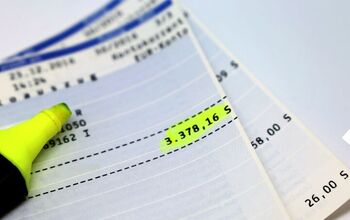Must-have Sinking Fund Categories on Your Monthly Budget

Let’s look at the sinking fund categories that you should include in your monthly budget and be prepared for future expenses right in time.
A budget gives you a plan on how to spend your money in a given period (which is usually a month).
If you want your budgeting efforts to be successful, you don’t just plan for monthly expenses but also account for future planned expenses and start saving for them.
And that’s what sinking fund helps with!
What Are Sinking Funds?
A sinking fund also known as a reserve fund is simply a mini-savings account to save money for future planned expenses.
These are the expenses that are not part of your monthly budget but will eventually come up in the future.
Now, you must be wondering, then what are emergency funds meant for? Well, sinking funds are different than emergency funds.
You’re using an emergency fund to save money for the unexpected expenses that you didn’t plan for. They can be expenses like house roof repair due to leak or an emergency doctor visit and so on.
But the sinking funds are meant for saving money each month for a specific future expense or financial goal.
They help in avoiding a complete financial burden in one month for already known expenses such as kids’ birthdays, Christmas expenses, vacations, etc.
A sinking fund helps in better planning for the known future expenses so that you don’t have to figure out ways to come up with cash to pay for them.
Even though these expenses are not part of your regular monthly expenses, but you start saving for them little by little every month to ensure you have enough cash saved to pay for these known expenses.
For example, you might have a recurring expense that you pay bi-annually or quarterly, such as car insurance, car registration, etc. Sinking funds help plan and save for these expenses well in advance in time.
Related posts:
13+ Tips to Save Money on Grocery Shopping
Financial Literacy: What you need to know?
11 Free Blank Budget Worksheet Printable to Take Control of Your Finances
Budget Meal Planning – 11 Easy Tips and Tricks (That Actually Works)
While keeping aside money for the sinking fund you want to ensure that you use it just for the planned expenses for which the sinking fund is set up for. You don’t want to use it for any purpose.
You can consider opening a saving account for a sinking fund and there are three ways to set them up-
- You can either have one saving account where you park all your money for every sinking fund category you are saving for.
If you decide to go this way, make sure you’re super organized and know how much money is meant for each category. - Or, you can have a separate saving account for each sinking fund category. This way you can be better organized at keeping tabs on money for each expense.
You can label each saving account with the name of the expenses you’re saving for to avoid any confusion. - You can use sinking fund envelopes and put away cash for each category in separate envelopes.
You can set up your sinking fund in whatever way works best for you. The main goal here is to be consistent and make sure that you’re putting away money each month in the sinking funds you chose to set up.
Now that you know what are sinking funds and why are they important, let’s look at sinking fund categories that you should include in your budget
This will help you determine the expenses for which you can set up a sinking fund and then, you can nail down on the expenses you want to save for.
To keep it simple. I’ve first broken them down into broad categories and then further narrowed them down to individual categories.
Home expenses sinking fundIf you are a homeowner, you need a sinking fund for home expenses that are not covered by your insurance.
When you own a house, there will be certain repairs and other costs that you will need to incur to maintain the house. These costs are typically not covered by the insurance and you need to pay them from your pocket.
To set up the housing expense sinking fund, estimate how long before if something might need a replacement in the house. Based on that, you will get an estimated amount for the expenses and you can set up a sinking fund for it.
You may require the following sinking funds for house expenses:
- Upgrading furniture or appliances
- House repairs
- Property taxes
- House Insurance
- Regular home maintenance (like pool maintenance or outdoor maintenance)
You need a car to get around town and run errands. This means you will have vehicle-related time to time to take care of.
You may consider setting up a vehicle sinking fund to cover costs of:
- Insurance premium
- Maintenance
- Repairs
- Registration fees
- Car up-gradation or replacement
- Tires replacement, etc.
Having the kids come in with a lot of expenses that you need to take care of. Having a sinking fund just for the kids will help to keep up with these expenses.
Here are few expenses that can be covered in this fund:
- Daycare expenses
- Back to school shopping expenses
- New baby expenses
- School expenses
- College tuition fee
- Extra activities
- Sports expenses
- Birthday expenses
Medical expenses are unavoidable and can pop up from time to time.
If you don’t have good insurance, you may consider setting up a medical sinking fund to cover:
- Cost of deductibles
- Medicines
- Out-of-pocket expenses
- Dentist visits
- Eye care, etc.
Pet sinking fund
Pets are adorable but they do cost you money. You need to take care of their
- Regular vet-care expenses
- Emergency vet care
- Medication
- Food
- Toys
- Bedding
- Shots, and so on.
If you have a pet, it is good to set up a pet sinking fund to cover all these expenses.
Holidays sinking fundsHolidays and birthdays can be budget spoilers if you don’t plan on them in advance, especially when you have a family.
Having a separate sinking fund for holiday and birthday celebrations can be a huge relief as you won’t have to come up with last-minute cash to cover the expenses.
This fund can help you in covering the cost of:
- Birthday parties
- Birthday gifts
- Holiday gifts and cards
- Wrapping paper
- Gift bags
- Traveling expenses, etc.
If you want to go on a vacation and spend some quality time with your family without breaking the bank, then you should set up a travel sinking fund.
It will help you save gradually for the travel expenses like:
- Hotel stays
- Car rentals
- Air tickets
- Food
- Activities and so on.
You must create a separate sinking fund category for your physical and emotional well-being. This might help you take care of expenses like:
- Salon visits
- Spas
- Massages
- Haircuts
- Annual gym membership fee
- New clothes and so on.
Incorporating sinking funds into your budget is quite easy even though you may have many different categories.
You need to determine the estimate of the expenses and break it down into monthly installments that you need to keep aside for saving for these expenses.
For instance, if you have the $8,000 in property taxes due in August, you can start saving $1,000 per month starting January to avoid any burden. That’s the gist of sinking funds.
You must account for the sinking fund just as a monthly expense on your budget and instead of spending the money right away, you will put that money in a separate bank account for future use.
Final thoughtsIncluding sinking funds in your budget keeps you one step ahead and be prepared for most of the known expenditures coming your way.
They help you in becoming more intentional about money and plan accordingly so that you don’t have to live paycheck to paycheck ever again.
If you haven’t been using the sinking fund yet, now is the time to get on board to avoid any financial hardships in the future.
Related posts:
30+ Dirt Cheap Meals (That You Can Make For $5 or Less)
Hi, I'm Anika. With my majors in Accounting and Finance, I'm here to empower people by sharing the simple and actionable money management and money-saving tips to live a debt-free financially independent life. I have been featured on popular websites like Bankrate and Authority Magazine.






















Comments
Join the conversation